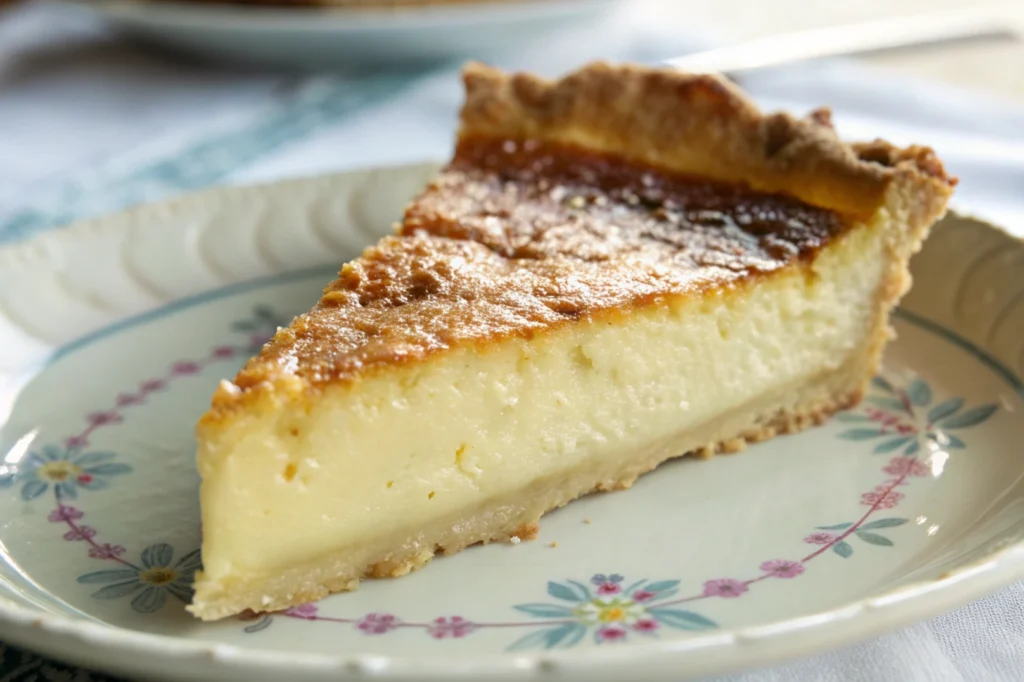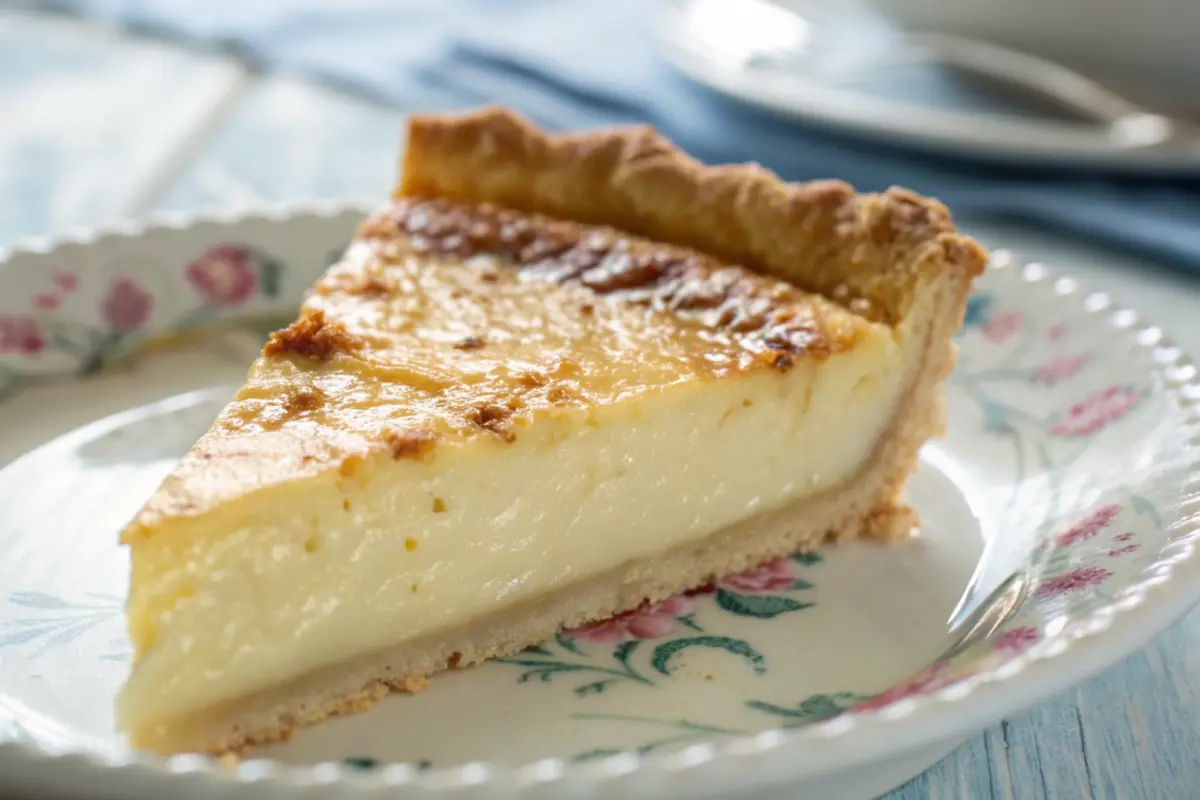When it comes to desserts that offer a creamy, indulgent experience, Mexican cheesecake is a standout. This delightful treat combines traditional cheesecake elements with a unique twist that reflects the rich culinary heritage of Mexico. But what is Mexican cheesecake made of? In this comprehensive guide, we’ll explore its origins, essential ingredients, and the creative variations that make it a crowd favorite.
Introduction
The Origin of Mexican Cheesecake
Mexican cheesecake has roots in the fusion of European and indigenous culinary traditions. The introduction of cream cheese and dairy-based desserts came with European settlers, while the use of local ingredients like condensed milk and spices added a distinctly Mexican flavor. Over time, Mexican bakers developed a cheesecake that’s less dense but full of vibrant taste.
Unlike traditional New York-style cheesecake, Mexican cheesecake often incorporates sweetened condensed milk and aromatic spices. This combination creates a dessert that’s lighter in texture but still rich in flavor, offering a perfect balance of sweetness and creaminess.
How Does Mexican Cheesecake Differ From Traditional Cheesecake?
While both types of cheesecake share a creamy base, Mexican cheesecake stands out in a few key ways:
- Ingredients: It uses condensed milk for a smoother texture and sweetness.
- Flavor Profile: Infusions of vanilla and spices like cinnamon give it a warm, aromatic quality.
- Crust: Often made from Maria cookies, a staple in Mexican households, as opposed to the classic graham crackers.
Understanding these differences highlights why Mexican cheesecake is a beloved dessert in its own right.
The Essential Ingredients of Mexican Cheesecake
The Role of Cream Cheese in Mexican Cheesecake
At the heart of every cheesecake is cream cheese. Its rich, tangy profile forms the creamy base of the dessert. In Mexican cheesecake, cream cheese ensures a velvety texture that pairs beautifully with the sweetness of the other ingredients.
For the best results, always use full-fat cream cheese. Its consistency is ideal for achieving a smooth, indulgent finish.
Incorporating Condensed Milk for Sweetness
One of the defining characteristics of Mexican cheesecake is the use of condensed milk. Unlike sugar, condensed milk adds a caramel-like sweetness and helps maintain a creamy consistency. It also eliminates the need for granulated sugar, making the recipe simpler to prepare.
When wondering what Mexican cheesecake is made of, condensed milk is a must-have ingredient that sets it apart from traditional versions.
Vanilla Essence and Its Unique Flavor Contribution
Vanilla essence is more than just a flavoring agent in Mexican cheesecake. It complements the sweetness of the condensed milk and enhances the cream cheese’s tangy notes. Mexican vanilla, in particular, is known for its deep, aromatic quality and can elevate the overall flavor.
A teaspoon of high-quality vanilla essence or extract is all you need to achieve that signature taste.
Eggs: The Binding Element
Eggs play a critical role in cheesecake, serving as the binding element that holds the mixture together. They also help create a custard-like texture during baking. In Mexican cheesecake, the combination of eggs with cream cheese and condensed milk ensures a silky, sliceable dessert.
Use room-temperature eggs for better incorporation and an even batter consistency.
Crust Options: From Graham Crackers to Maria Cookies
The crust of Mexican cheesecake is as important as its filling. While graham crackers are common in American cheesecakes, Mexican versions often use Maria cookies. These lightly sweet biscuits add a subtle, buttery flavor that complements the rich filling.
- Maria Cookies: For a traditional touch.
- Graham Crackers: A more familiar option for those outside Mexico.
- Oats or Nuts: For a unique twist.
A buttery crust provides the perfect contrast to the creamy layers above.
Unique Variations of Mexican Cheesecake
Adding Dulce de Leche
One popular variation of Mexican cheesecake is incorporating dulce de leche. This caramel-like sauce can be swirled into the cheesecake batter or drizzled on top for a decadent finish. Its deep, toffee-like flavor pairs wonderfully with the cream cheese and condensed milk base.
When considering what is Mexican cheesecake made of, adding dulce de leche creates a luxurious twist that elevates the dessert to new heights.
Chocolate Swirls and Their Appeal
For chocolate lovers, adding swirls of melted chocolate or cocoa to the cheesecake batter creates a visually stunning and delicious variation. The slightly bitter notes of chocolate contrast beautifully with the sweetness of the condensed milk and the tanginess of the cream cheese.
To achieve a marbled effect, simply spoon melted chocolate over the batter and use a knife to create swirls before baking.
Infusing Mexican Spices (Cinnamon, Nutmeg)
Infusing Mexican spices like cinnamon and nutmeg into the cheesecake batter introduces warm, earthy flavors. These spices are staples in Mexican desserts and add a festive touch, especially during holidays.
- Add ground cinnamon to the batter for subtle warmth.
- Sprinkle nutmeg over the finished cheesecake for a fragrant garnish.
These spices not only enhance the taste but also highlight the cultural richness of Mexican cheesecake.
Why Mexican Cheesecake Deserves a Place on Your Table
Mexican cheesecake is more than just a dessert; it’s a celebration of culinary creativity. By blending traditional ingredients like cream cheese with unique elements such as condensed milk, vanilla essence, and spices, it offers a taste experience that’s rich yet approachable.
Whether you’re a fan of classic cheesecakes or looking for something new to try, this dessert is sure to impress.
Crafting a Mexican cheesecake is an adventure in flavor and texture. Now that you know what is Mexican cheesecake made of, why not experiment with its many variations? From dulce de leche swirls to aromatic spices, there’s no shortage of ways to make this dish uniquely your own.
Step-by-Step Guide to Making Mexican Cheesecake

Preparing the Ingredients
Before delving into the recipe, it’s essential to understand what is Mexican cheesecake made of. This indulgent dessert typically features a combination of cream cheese, sugar, vanilla, and eggs for the filling, all encased in a unique crust, often made with tortillas or puff pastry.
To prepare the ingredients:
- Crust: Use flour tortillas or puff pastry sheets. Ensure they’re at room temperature to make them pliable.
- Filling: Blend cream cheese (softened for easy mixing), granulated sugar, and vanilla extract. The secret lies in the quality of your cream cheese—it must be full-fat for that rich, creamy texture.
- Topping: Some recipes call for a cinnamon-sugar mixture to sprinkle on top, enhancing the dessert’s Mexican flair.
Quick Tip:
For a twist, incorporate a splash of citrus juice (like lime or orange) into the filling for a zesty touch.
Baking Techniques and Tips for a Perfect Texture
When baking, achieving the perfect texture is crucial. The filling should be silky and smooth, while the crust should have a subtle crunch. Here’s how to master it:
- Preheat the Oven: Always preheat to ensure even baking.
- Water Bath Method: Place your baking pan in a larger dish filled with hot water. This prevents cracks by providing a gentle, moist heat.
- Bake Time: Typically, 35-45 minutes at 350°F. Remove when the edges are set, but the center has a slight jiggle—it will firm up as it cools.
- Cooling Process: Let the cheesecake cool in the oven with the door slightly ajar. Then refrigerate for at least 4 hours to enhance the flavors.
Pro Tip:
Avoid overmixing the batter to prevent air bubbles, which can lead to cracks during baking.
Presentation and Serving Ideas
The final touch is all about presentation. A well-decorated cheesecake not only pleases the palate but also the eyes.
- Toppings: Fresh fruit, like strawberries or mango slices, pairs beautifully with the creamy filling. Drizzle caramel or chocolate sauce for extra decadence.
- Slices: For clean cuts, dip your knife in hot water before slicing.
- Garnish: Dust with powdered sugar or cinnamon for a classic look.
Serve chilled for the best texture and flavor. Pairing it with a hot beverage like coffee or Mexican hot chocolate can elevate the experience.
Nutritional Insights of Mexican Cheesecake
Caloric Breakdown
Understanding what is Mexican cheesecake made of helps shed light on its nutritional profile. A typical slice can range between 300-450 calories, depending on the recipe.
- Crust: Flour tortillas or puff pastry adds a significant caloric load, primarily from carbohydrates.
- Filling: The combination of cream cheese and sugar contributes to the high-calorie count, mostly from fats and sugars.
- Topping: Cinnamon-sugar or caramel drizzles add extra calories but also a touch of irresistible flavor.
Protein, Fat, and Carbohydrate Content
Mexican cheesecake provides a balanced macronutrient profile, though it leans toward being fat-heavy:
- Protein: Cream cheese and eggs are rich in protein, offering about 6-8 grams per slice.
- Fat: The full-fat cream cheese is the primary contributor, with 15-20 grams per serving.
- Carbohydrates: The crust and sugar contribute approximately 25-30 grams of carbs per slice.
While indulgent, this dessert can fit into a balanced diet when consumed in moderation.
Healthier Alternatives for Guilt-Free Enjoyment
If you love Mexican cheesecake but want to cut back on calories, there are ways to enjoy it guilt-free. Here are some ideas:
- Low-Fat Cream Cheese: Swap regular cream cheese for a low-fat or Greek yogurt-based alternative.
- Sugar Substitutes: Use natural sweeteners like stevia or monk fruit to reduce sugar content.
- Crust Alternatives: Opt for crushed graham crackers or almond flour instead of puff pastry or tortillas.
- Portion Control: Serve smaller slices to indulge without overindulging.
By making these swaps, you can create a lighter version without compromising too much on flavor.
FAQs
1-What is Mexican cheesecake made of?
Mexican cheesecake typically features a rich and creamy filling made from cream cheese, sweetened condensed milk, eggs, and vanilla extract. Bakers often add a hint of citrus, such as lime or lemon zest, to create a bright and tangy flavor. They usually prepare the crust by combining crushed graham crackers or Maria cookies with melted butter.
2-How long does Mexican cheesecake last?
If you store Mexican cheesecake properly in the refrigerator, it stays fresh for 5-7 days. To maintain its quality, use an airtight container or wrap it tightly with plastic wrap or aluminum foil. For longer storage, freeze the cheesecake for up to 2-3 months and wrap it thoroughly to prevent freezer burn.
3-Can I substitute condensed milk in Mexican cheesecake?
Yes, you can replace condensed milk in Mexican cheesecake, though it may change the texture and sweetness. A common substitute includes a mix of heavy cream and sugar or evaporated milk with sugar. For a healthier option, try blending coconut cream with your preferred sweetener.
4-How is Mexican cheesecake served traditionally?
Traditionally, people serve Mexican cheesecake chilled and often top it with fresh fruits like strawberries or mangoes, a drizzle of caramel or dulce de leche, or a sprinkle of powdered sugar. They slice it into wedges and enjoy it as a decadent dessert after a hearty meal. Variations may include whipped cream or pairing it with strong coffee or café de olla.
Conclusion: Why Mexican Cheesecake Stands Out
Mexican cheesecake stands out as a dessert that beautifully blends traditional flavors with a modern twist. To begin with, its unique combination of a flaky crust, silky cream cheese filling, and a touch of cinnamon-sugar or citrus zest creates a flavor profile that is both comforting and innovative. In comparison to other cheesecakes, its versatility allows for endless customization, whether through toppings, crust types, or even healthier adaptations.
What’s more, what truly sets it apart is its ability to offer a perfect balance between indulgence and simplicity. The recipe is straightforward, yet at the same time, the results feel luxurious, making it accessible to home bakers and impressive for special occasions. Additionally, the cultural influence of Mexican flavors like cinnamon, vanilla, and citrus adds depth and authenticity that appeals to a wide range of palates.
In the end, Mexican cheesecake is more than just a dessert—it’s an experience that celebrates rich textures, bold flavors, and the joy of sharing something truly special.


2 thoughts on “What is Mexican Cheesecake Made Of ?”